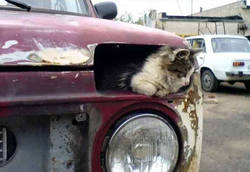
Errors - Failure to Use Turn Signals
This common driver error is simple to resolve, and could save your life. Let other drivers know in advance when you are turning, also which direction you will be turning. Signal other drivers when you are about to change lanes. Do not expect them to guess your moves. Keep in mind that they may not being paying close attention to you. Avoid major and minor accidents simply by using your blinkers. Turn signals off after changing lanes.
If you’ve ever been driving on the road, you know how important turn signals are. Not only are they a legal requirement, but they also help keep drivers safe on the road by allowing them to anticipate the moves of other drivers. Unfortunately, this doesn’t stop some drivers from failing to use turn signals, which can lead to serious accidents and even fatalities.
- First of all, when drivers fail to use turn signals, they are likely breaking the law. Depending on where you live, you can be fined for not using a turn signal. This is because it’s considered a traffic violation and can be evidence of reckless driving.
- In addition to being a legal requirement, failing to use turn signals can be dangerous for all drivers on the road. When a driver doesn’t signal their intention to turn, other drivers can’t anticipate their move and may not be able to react in time. This can lead to an accident, particularly when the other drivers don’t have enough time to slow down or take evasive action.
- It’s also important to note that failing to use turn signals can also lead to confusion on the road. Without a turn signal, other drivers won’t know where the driver is going, which can lead to them making incorrect assumptions. This can cause traffic congestion and even more dangerous situations.
Overall, it’s essential that all drivers use turn signals whenever they are changing lanes or turning. Not only is it a legal requirement, but it also helps keep all drivers safe on the road. Remember, when you fail to use turn signals, you’re not just putting yourself at risk – you’re putting all other drivers at risk too.















